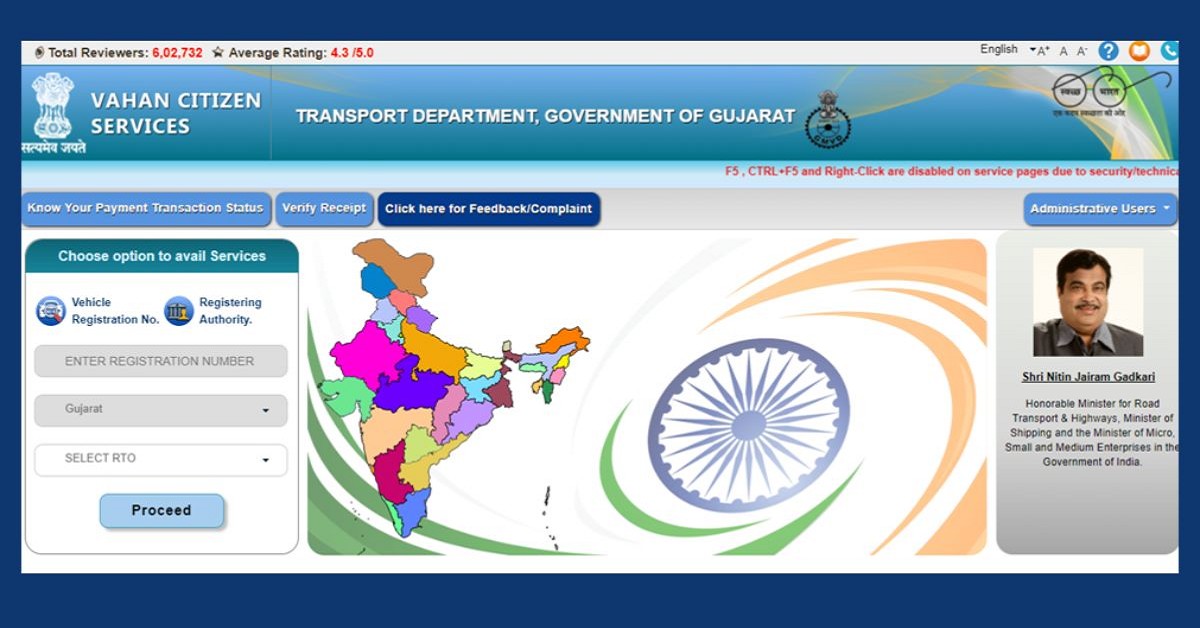The evolution of India's transport infrastructure has been significantly shaped by the government's strategic policies, with the Parivahan portal emerging as a cornerstone in this transformation. The Parivahan portal, along with its mobile app counterpart, mParivahan, represents a major leap towards digital governance, offering a wide range of services related to vehicle registration, driving licences, and road transport regulation. The growth and success of these platforms can be largely attributed to forward-thinking government policies aimed at enhancing transparency, efficiency, and accessibility in the transportation sector.
Introduction to the Parivahan Portal and mParivahan
The Parivahan portal is an online platform developed by the Ministry of Road Transport and Highways (MoRTH) to streamline and digitise various services related to road transport in India. The portal covers a broad spectrum of services, including vehicle registration, issuance and renewal of driving licences, payment of road taxes, and checking of vehicle-related documents. mParivahan, the mobile application version of the portal, extends these services to smartphones, making them more accessible to the general public.
Government Policies Driving the Growth of the Parivahan Portal
Several key government policies have played a pivotal role in the development and expansion of the Parivahan portal and mParivahan. These policies have not only facilitated the portal's growth but have also contributed to transforming the way citizens interact with transport-related services.
1. Digital India Initiative
The launch of the Digital India initiative in 2015 was a major catalyst for the growth of the Parivahan portal. This flagship programme by the Government of India aimed to transform the country into a digitally empowered society and knowledge economy. Under this initiative, the government sought to provide citizens with easy access to various services through digital platforms.
The Parivahan portal was developed in alignment with the goals of Digital India, ensuring that transport services were brought under the umbrella of e-governance. By leveraging digital technologies, the government aimed to reduce the reliance on physical paperwork, minimise bureaucratic delays, and provide citizens with faster and more transparent services.

2. Good Governance and Transparency
The government's emphasis on good governance and transparency has been a driving force behind the Parivahan portal's success. Traditional processes for obtaining vehicle registrations, driving licences, and other transport-related services were often plagued by inefficiencies, corruption, and lack of transparency. The government's push for digital governance aimed to address these issues by creating an online platform where citizens could access services directly, without the need for intermediaries.
The Parivahan portal's design ensures that all interactions are recorded and traceable, reducing opportunities for corruption and ensuring that citizens can track the status of their applications in real time. This focus on transparency has significantly increased public trust in the system, contributing to the portal's widespread adoption.
3. One Nation, One RTO Policy
The introduction of the "One Nation, One RTO" policy was another significant factor that influenced the development of the Parivahan portal. This policy aimed to standardise vehicle registration and driving licence procedures across the country, ensuring uniformity and ease of access for citizens, regardless of their location.
The Parivahan portal serves as a centralised platform that integrates RTOs (Regional Transport Offices) from across India. This centralisation has made it possible for citizens to access services from any RTO, irrespective of their home state. For example, a citizen who has moved from one state to another can now transfer their vehicle registration or renew their driving licence without having to visit multiple offices. This policy has streamlined processes and reduced the complexities associated with inter-state transport services.
4. Promotion of Cashless Transactions
The government's push towards a cashless economy, particularly after the demonetisation move in 2016, also played a significant role in the adoption of the Parivahan portal. By promoting digital payments, the government aimed to reduce cash transactions and encourage the use of online payment methods for various services.
The Parivahan portal and mParivahan have integrated multiple payment gateways, allowing citizens to pay road taxes, fines, and service fees online. This move towards cashless transactions has not only made payments more convenient but has also reduced the instances of cash-related fraud and corruption. The seamless integration of digital payment systems within the portal has further boosted its popularity and usage.
5. Road Safety and Regulatory Reforms
The Indian government has been actively working to improve road safety and implement stringent regulatory reforms in the transport sector. The Motor Vehicles (Amendment) Act, 2019, introduced several measures aimed at enhancing road safety, enforcing stricter penalties for traffic violations, and improving the overall regulation of road transport.
The Parivahan portal has been instrumental in the implementation of these reforms. For instance, the portal provides an easy-to-use platform for issuing e-challans for traffic violations, thereby streamlining the process of penalty collection and ensuring compliance with the new regulations. Additionally, the portal enables real-time verification of driving licences and vehicle documents, making it easier for law enforcement agencies to enforce road safety laws effectively.
Impact of Government Policies on mParivahan
mParivahan, the mobile application counterpart of the Parivahan portal, has also seen significant growth, thanks to the same government policies that propelled the success of the portal. The app provides citizens with the convenience of accessing transport services on the go, aligning with the government's vision of making services more accessible and user-friendly.
The policies promoting digital India, cashless transactions, and regulatory reforms have directly contributed to the app's development and widespread use. For instance, citizens can now store digital copies of their driving licences and vehicle registration certificates on mParivahan, which are legally recognised by law enforcement agencies across the country. This feature has greatly enhanced the convenience for users, reducing the need to carry physical documents.
Conclusion
The growth of the Parivahan portal and mParivahan has been significantly influenced by a series of progressive government policies aimed at digitalising and streamlining transport services in India. From the Digital India initiative to the "One Nation, One RTO" policy, these strategies have not only made transport services more accessible but have also improved transparency, efficiency, and governance.






 CAclubindia
CAclubindia

